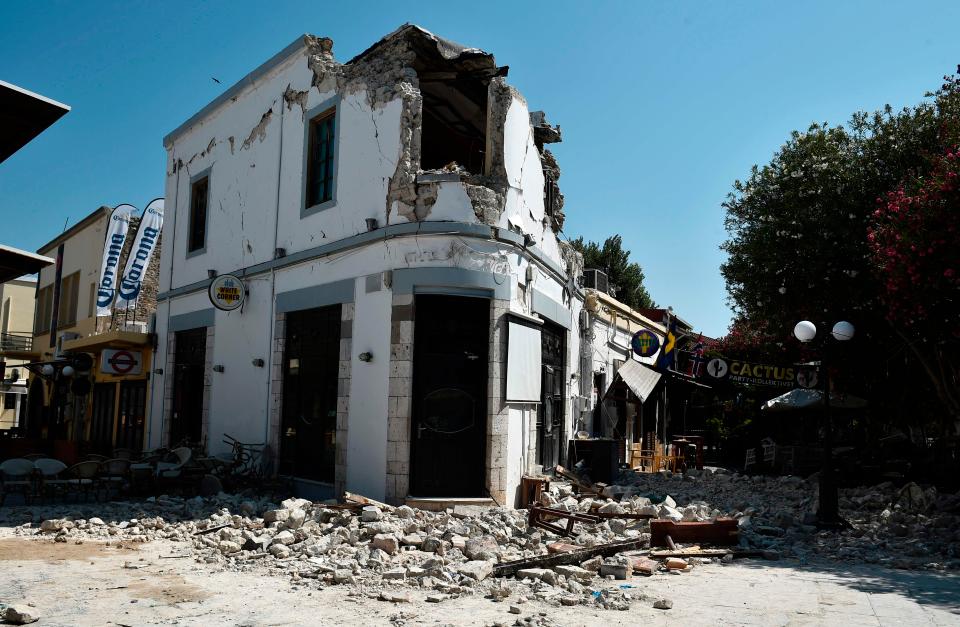by Volkan Sevilgen, Ross S. Stein, and David Jacobson, Temblor
Click here for an update on this earthquake

The large earthquake struck at 1:40 am local time near the tourist meccas of Kos, Greece, and Bodrum, Turkey. It was preceded by a M=2.5 shock approximately 20 minutes before the mainshock. The earthquake occurred at a relatively shallow depth of 10 km, and strong shaking lasted for about 20 seconds. Despite this, there are only two confirmed fatalities, both of which were tourists. Based on reports, and pictures coming in from Greece and Turkey, the majority of damage appears to have occurred on Kos (see below), where there are currently over 200,000 holidaymakers, according to officials on the island. In addition to the two deaths, hundreds of people have been injured in both Greece and Turkey, with most of these due to falling debris and collapsing structures. Following the mainshock, there was also a small tsunami recorded by tide gages, with the sea dropping by up to 25 cm (1 ft) before cresting at about 5-10 cm (2-5 inches) above normal. While the USGS and European-Mediterranean Seismological Centre report the earthquake’s magnitude as 6.7, the Kandilli Observatory in Turkey assigns it a magnitude of 6.5.


At least six centuries of quiet
No large historical shock is known along this fault (based on the GEM Historical Earthquake Catalog), although in 1863, a M~7.5 earthquake occurred about 75 km (40 mi) to the south. However, the region more recently saw a M=6.4 in 1933 which struck just south of the island of Kos.

The earthquake focal mechanism released by the USGS is consistent with extension along a WNW-striking fault inclined about 56° to the Earth’s surface. This looks to us most consistent with the quake rupturing a western extension of the mapped Gökova Fault. If so, there remains a roughly 100-km-long (60 mi) unruptured section of the fault, with the potential to produce a M~7.3 shock. This entire area is currently filled with summer tourists enjoying the beaches and antiquities of this region, and so people should take precautions and remain outside of ancient stone buildings.
The occurrence of large, damaging shock after a long hiatus is a reminder that active faults should be respected as sentinels of seismic risk, and we should build and prepare accordingly.
References
European Mediterranean Seismic Centre (EMSC)
Turkish Mineral Research and Exploration Institute (MTA)
Global Earthquake Model Foundation’s Historical Earthquake Catalog (GEM)
U.S. Geological Survey (USGS)
Hulya Kurt, Emin Demirbag, Ismail Kuscu (1999), Investigation of the submarine active tectonism in the Gulf of Go ̈kova, southwest Anatolia–southeast Aegean Sea, by multi-channel seismic reflection data, Tectonophysics 305, 477–496 http://web.itu.edu.tr/kurt/publication_pdfs/A01-tectono99-gokova.pdf
- Earthquake science illuminates landslide behavior - June 13, 2025
- Destruction and Transformation: Lessons learned from the 2015 Gorkha, Nepal, earthquake - April 25, 2025
- Knock, knock, knocking on your door – the Julian earthquake in southern California issues reminder to be prepared - April 24, 2025
